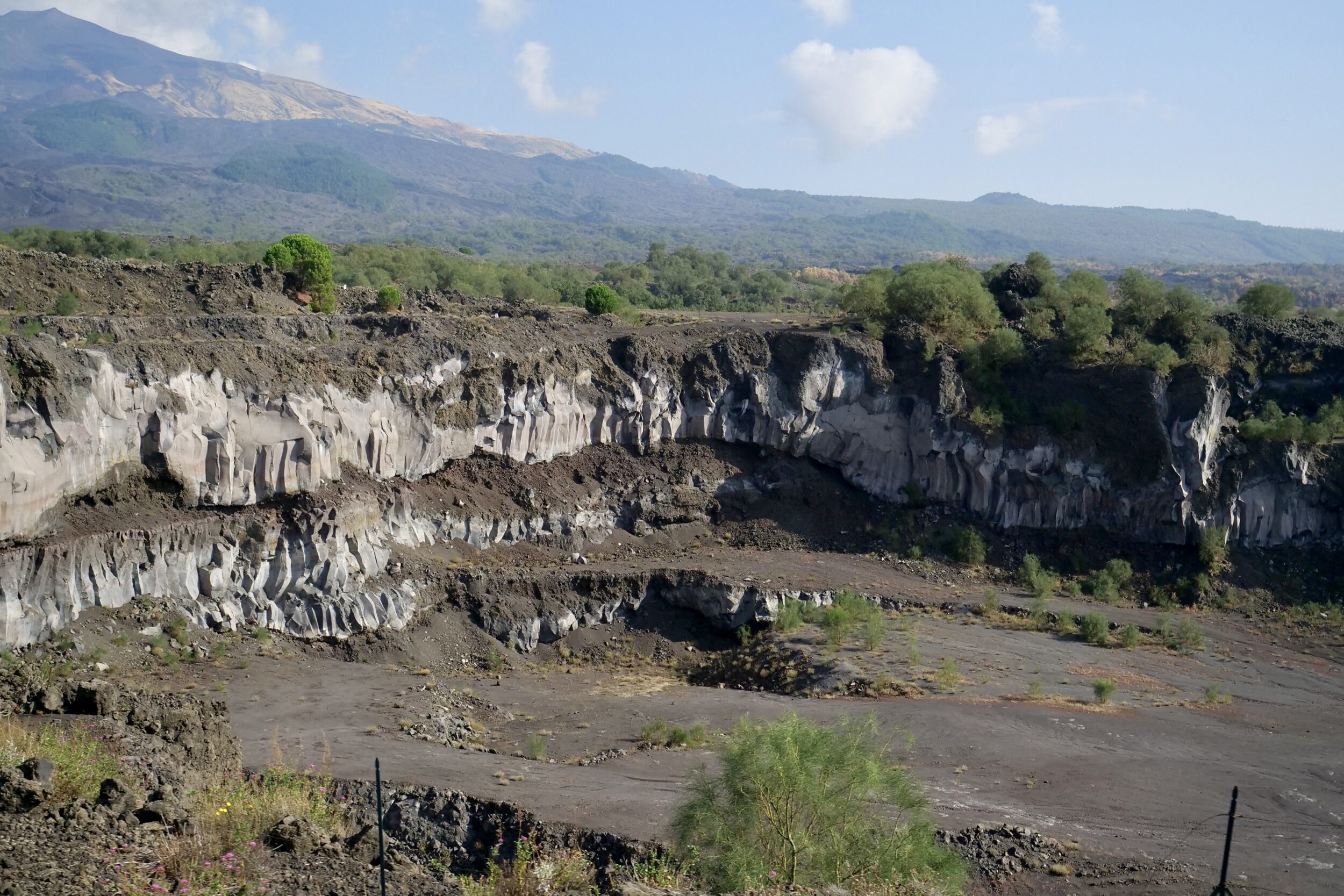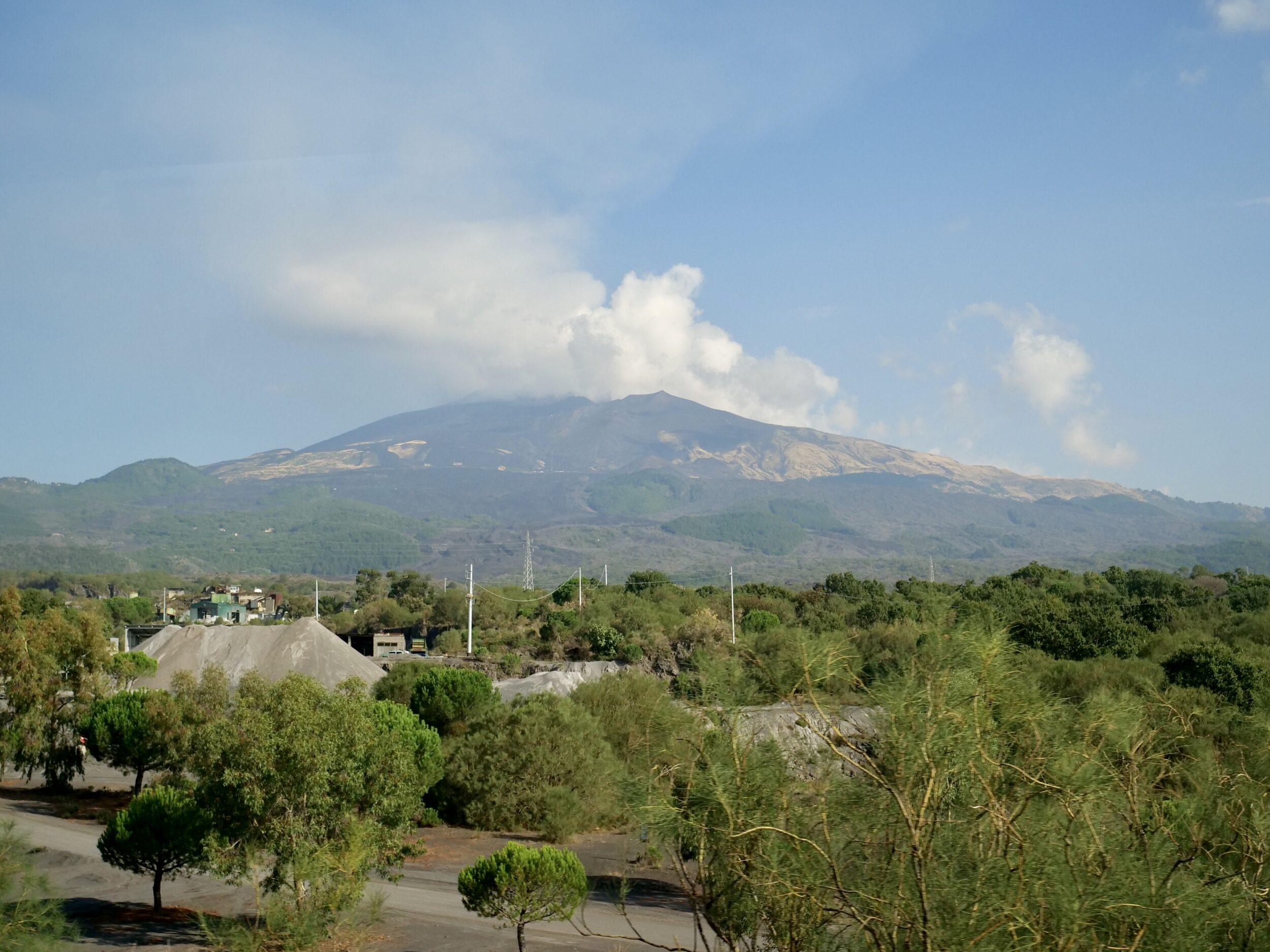We begin this series’ “on the volcano itself” section at its low point – in terms of altitude and photographic standards.
The featured image looks through the window of the bus.
At 9.44 am on the last September day of 2023, Catania’s metropolitan sprawl was now just behind and below us, whilst Etna utterly dominated our view ahead…and above.
If you look carefully, this post’s photos will give you a sense of how equally potent are Etna’s “destructive” and “creative”aspects.
Very evidently, the slopes above are an unstable mosaic.
There are dense forests, rudely interrupted by stark/dark lava-flows – become-solid, but still near-naked.
There are previously-devastated sections, now being “reclaimed” by grasses – plus, in some places – a modest amount of other “low-rise” vegetation.
If we had arrived half a million years earlier, Europe’s mightiest currently-active stratovolcano would have been still-invisible…or only barely-there.
Among the world’s dramatic landscape features, Mount Etna is very young.
The Finke River in Australia’s Northern Territory is circa 350 million years older. Even the Colorado River’s youthful Grand Canyon has existed for at least 6 million years…perhaps/arguably for 70 million years.

The pictured quarry is entirely a “fruit” of the volcano.
Etna’s eruptions have variously “built” the mountain itself, reshaped it, and destroyed parts of itself.
For as long as humans have recorded their history, Etna has been the most-evident “existential threat” to local humans, but also their “great provider”.
Around one million humans currently live on or adjacent to Mount Etna’s slopes.
Etna’s eruptions have killed remarkably few people – far fewer than is widely imagined…or sometimes asserted. A future post will provide more detail and explanation.
Mount Etna has greatly enriched the local earth, but scorched and buried some of it.
The volcano has provided much of the local earth itself..and placed millions of tons of it at altitudes which enjoy a much cooler climate than does the rest of Sicily’s arable land; the elevation also delivers much more rain than would otherwise fall…and snow, which would not fall at all, otherwise.
I do not know exactly what the pictured quarry has yielded. It could well have had a role in the construction of some of Catania’s oft-imposing buildings, local road-making, and the fertilising of farmlands.
